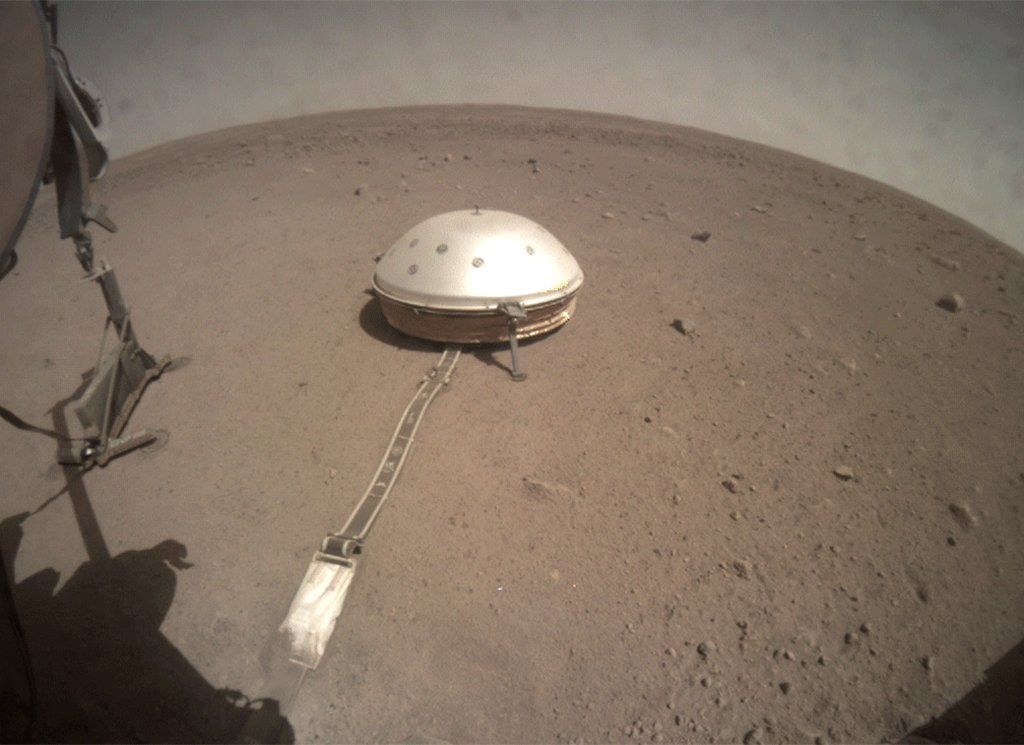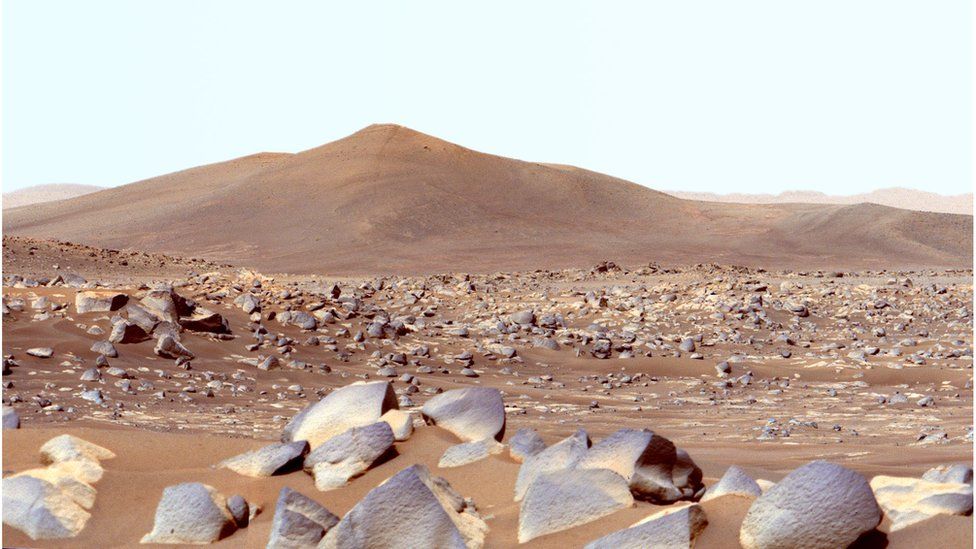Scientists say they now have some absolute numbers to describe the internal rock structure of Mars.
The data comes from the InSight spacecraft, which has been sensing quakes on the planet since early 2019.
The Nasa-led mission reveals the average thickness of Mars’ crust to be between 24km and 72km – somewhat thinner than had been expected.
But the key finding is the size of the planet’s core. Its radius of 1,830km is at the top end of previous estimates.
This is the first time science has managed to directly map the internal layering of a planet apart from the Earth. It’s been done also for the Moon, but Mars (total radius: 3,390km) is on a much larger scale.
Having this information allows researchers to better understand the formation and evolution of different planetary bodies.

Insight achieved its results in the same way that seismologists study internal layering on Earth – by tracking the signals from quakes.
These events release waves of energy. Changes in the path and velocity of the waves will betray the nature of the rocky materials through which they are passing.
The seismometer system deployed by the Nasa probe has observed hundreds of tremors, with a handful over the past two years having just the right properties to “image” Mars’ interior.
The instrument team, which is led from France and the UK, determines the rigid outer part, or crust, of Mars to be either 20km or 39km thick directly under the probe (depending on the precise sub-layering that exists). Extrapolating to the known surface geology of the rest of the planet, this suggests an average thickness of between 24km and 72km. By contrast, Earth’s average crustal thickness is 15-20km. Only in a continental region like the Himalayas can it reach 70km.
The really interesting number, however, is for the core. Signals from “Marsquakes” bouncing off this metal feature indicate that it starts nearly halfway down from the surface, at a depth of about 1,560km – and that it’s in a liquid state. Most prior estimates called for a smaller core.

The mission team says two fascinating consequences flow from the new direct observations.
The first is that the known mass and moment of inertia for Mars imply the core will be much less dense than previously thought, and that the iron-nickel alloy that dominates its composition must be strongly enriched in lighter elements, such as sulphur.
The second consequence relates to the layer inbetween the core and crust – the mantle. This is now thinner than previously assumed and appears to be a simple layer of rock with no major gradations, unlike in the Earth.
Again, based on Mars’ known size, it’s highly unlikely this mantle can achieve the pressures where the mineral bridgmanite becomes stable.
On Earth, this stiff mineral blankets the core, slowing convection and the loss of heat. On early Mars, its absence would therefore have led to rapid cooling.
This initially would have permitted strong convection in the metal core and a dynamo effect that drove a global magnetic field. But this, of course, has now switched off. Today, no global magnetic field can be detected at the planet.
If it were there, it would provide some shielding to protect its surface from the damaging radiation that constantly rains down from space and makes the world extremely inhospitable.

Prof Tom Pike from Imperial College London, UK, is one of the principal investigators on Insight’s seismometer system. He told BBC News: “We’ve been able for the first time to look inside another planet using seismology, and what we have seen on Mars is that we have a bigger core and a lighter core than what was expected. And that does tell us quite a bit about how the planet evolved over geological time.”
Dr Sanne Cottaar from Cambridge University is not on the mission team. She described the Insight results as a tour de force, given just how difficult it is to study the very small quakes that occur on Mars. They never get above a Magnitude 4, which humans would only notice within several kilometres of an event’s epicenter.
“Marsquakes are very, very faint,” she said. “It’s much more challenging than doing seismology on Earth. Mission scientists have also had to develop methods for how to work with just the one seismometer represented by the InSight lander. So to then see this data come out, and for them to actually be able to look inside the planet with that data, is really quite impressive.”
Details about the internal structure of Mars are reported in a series of scholarly papers in Science magazine. Dr Cottaar has a perspective published alongside them.